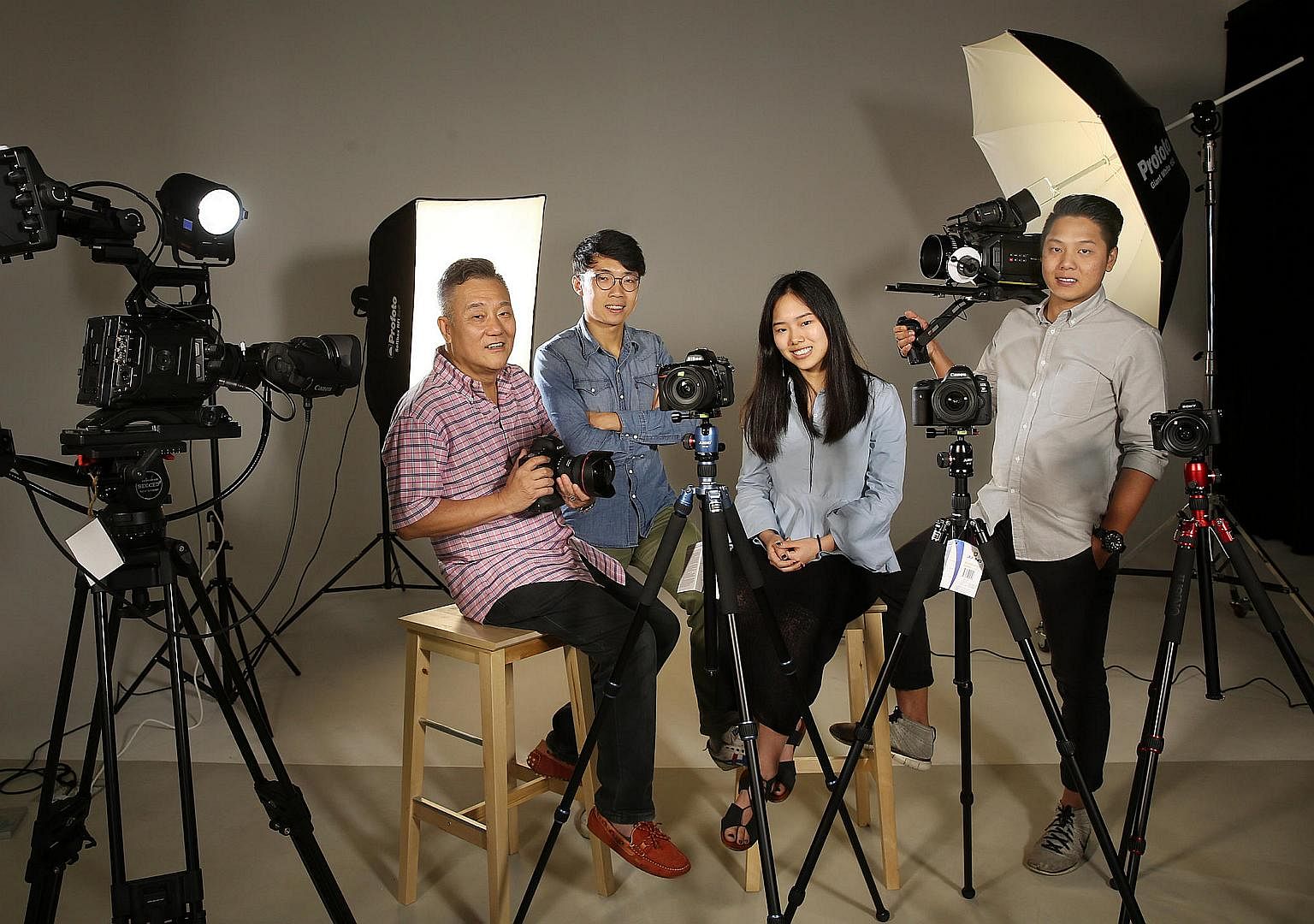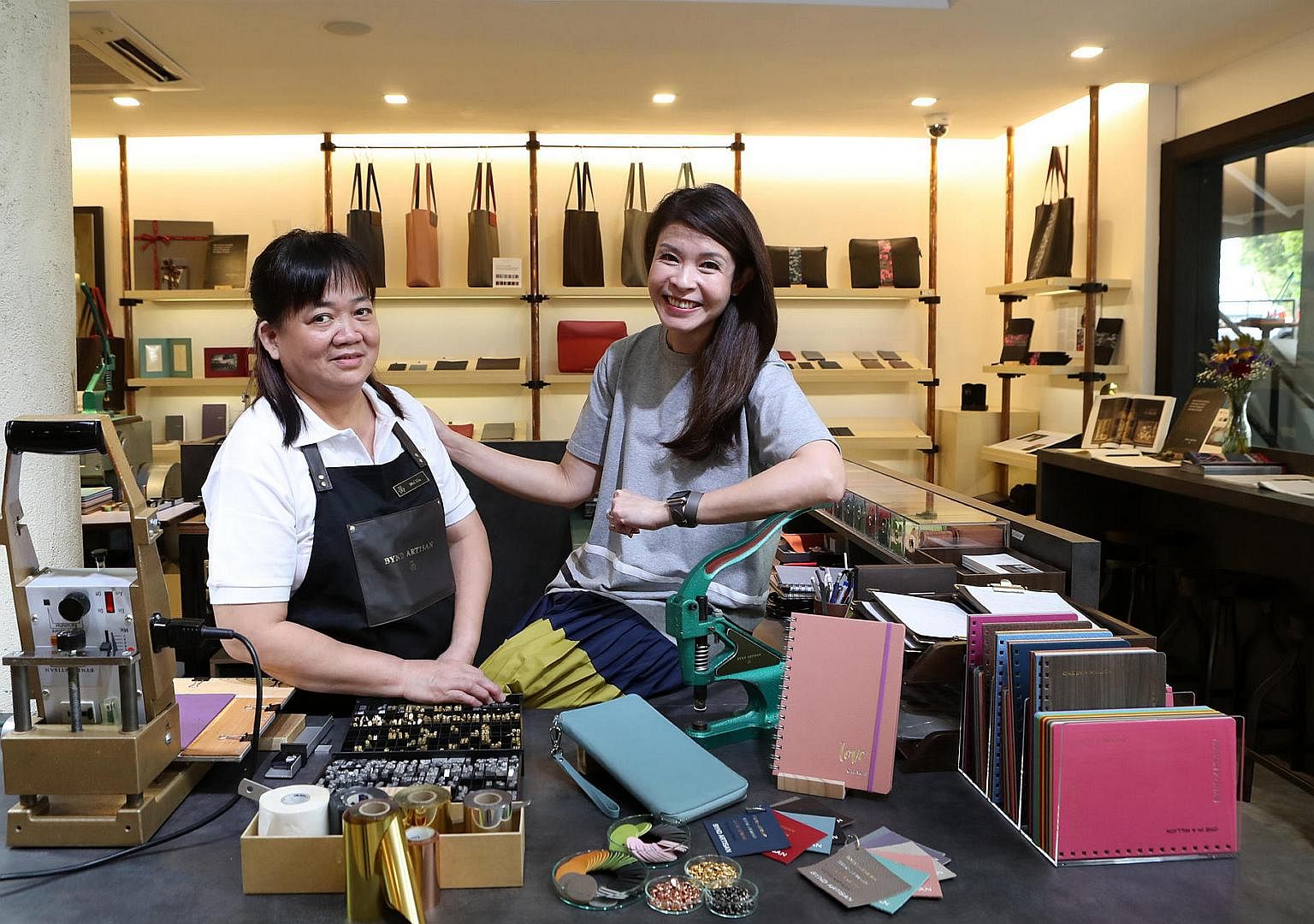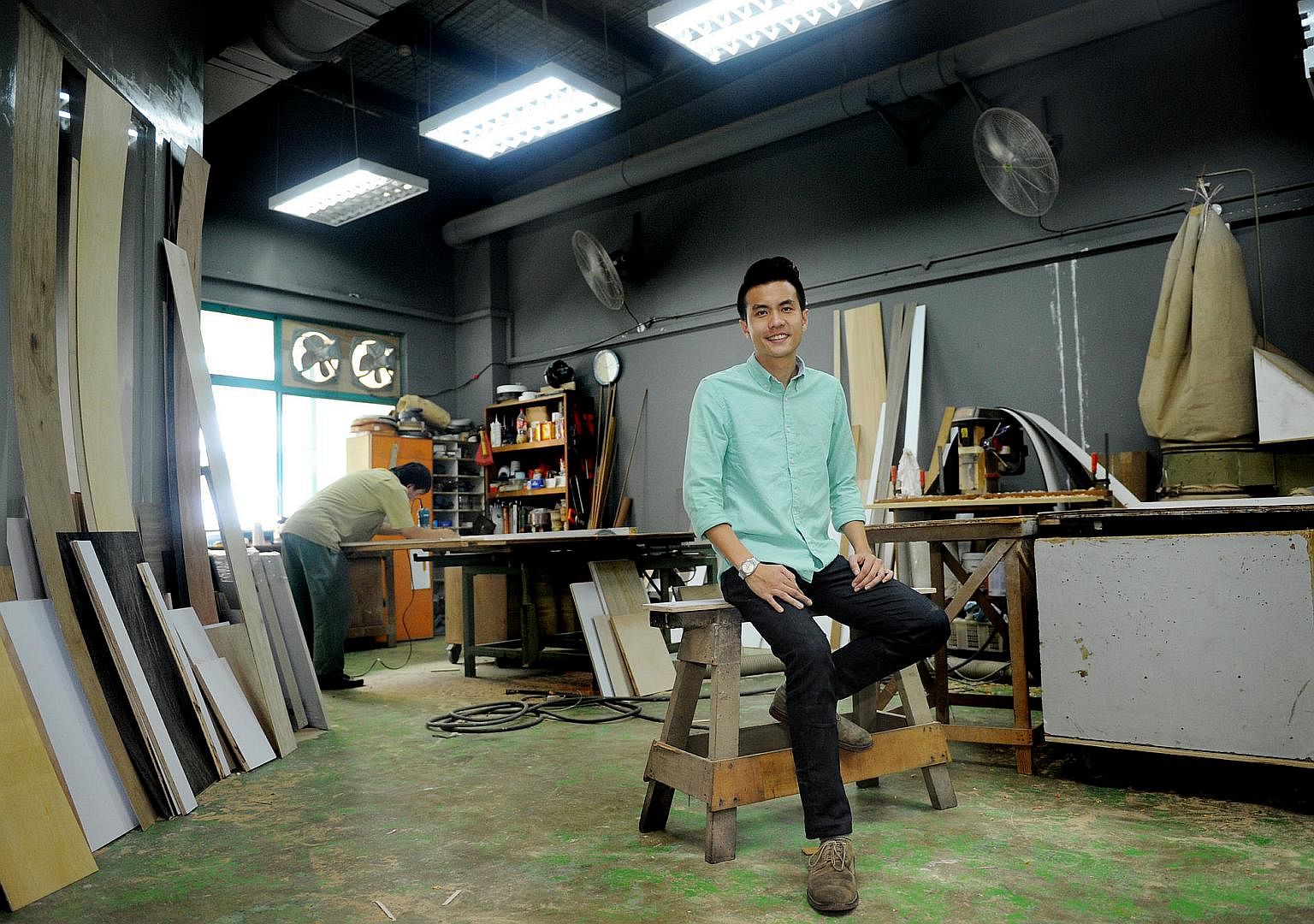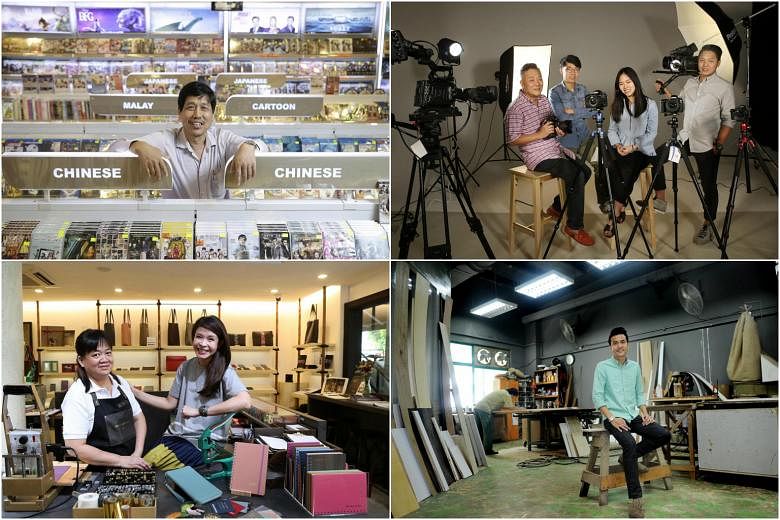SINGAPORE - Prime Minister Lee Hsien Loong, in his May Day Rally speech, stressed the need for local firms to upgrade themselves, build new capabilities and expand.
He singled out a book-binding workshop that turned the service into a premium craft as it sought to survive the digital revolution.
We highlight eight "old-school" Singapore companies that dared to change in their efforts to remain relevant.
1. Poh Kim Video

Poh Kim, the last surviving bastion of home-video retailing, has defied the onslaught of technological advances to open its 21st outlet in Yishun two months ago.
Its secret to its longevity since starting out in 1984? Strict cost management and the sheer will to outlast all its competitors.
It is also getting help from a National University of Singapore computer science student, Ms Janel Herseri, who has a proposal to return the business to profitability - a redesign of Poh Kim's website and to manage online interactions with customers on its social media channels.
Founder Lim Chee Yong, 58, is also counting on the sale of DVD film titles using the new 4K technology - ultra high-definition resolution - to boost sales.
2. Alan Photo

One of the first retailers here to stop selling film cameras when the digital camera revolution hit in the early 2000s, Alan Photo is once again remodelling itself to survive the advent of the smartphone camera.
Founder Alan Tan's children, who have since taken over the running of the business, have come up with an innovative idea of an "experience store" that allows potential customers to try and compare across all brands of cameras in the shop.
Dubbed REC by Alan Photo in CT Hub 2, an industrial building in Lavender Street, the 3,000 sq ft store is equipped with a studio, accompanying lights and photography consultants.
3. Bynd Artisan

Bookbinding company Grandluxe's rich 75-year history mattered little when accounting software and mobile phone calendar apps rendered books and diaries obsolete.
To come up with new ways to engage customers, third-generation owner Winnie Chan launched retail company Bynd Artisan in 2014, which aims to give customers an experience by selling custom-made notebooks and personalised leather products.
Bynd Artisan now has three outlets and there are plans to open a fourth one this year.
4. Roger&Sons

When Mr Morgan Yeo took over his father's furniture business in February 2014, JR&P Industries, due to the latter's failing health, he realised its business model was too antiquated for the 21st century.
A rebranding into a new firm - Roger&Sons - soon followed, which paid homage to his late father and offers customised carpentry work.
Instead of producing mass market office furniture, Mr Yeo and his brothers agreed that including design elements to elevate the artistry of the trade was the way forward.
A new website, branding and social media sites were also rolled out to leverage on the heritage and craftsmanship of the firm's carpentry.
5. Tools of The Trade

Despite doing a booming business supplying pots and pans to restaurants and hotels, kitchenware company Sia Huat went out on a limb to launch its retail arm in 2010 as it sought to leverage on the lack of speciality stores here.
Tools of The Trade (ToTT), which touts a lifestyle concept around cooking and baking, now contributes over 15 per cent of Sia Huat's business.
Its flagship store in Dunearn Road sells a mix of kitchenware, tableware and bakeware from over 100 brands, and also organises cooking classes, birthday parties and corporate team-building events.
6. Poli Medical

Giving up his high-flying management consultant job to join his family's traditional Chinese medicine (TCM) manufacturing business in 2010, Mr Dylan Hu was determined to banish the stereotypes the younger generation held of TCM.
So helped market one of the business' existing brands, TruLife, in 2011 to offer a range of detox products aimed at time-strapped young adults.
With young consumers in mind, Mr Hu worked on improving the taste profile and aesthetics of TruLife's products, ditching the traditional, old-school look of TCM packaging for sleek bottles, packaged in convenient, ready-to-go sizes.
Today, TruLife is stocked at pharmacies such as Guardian and Watsons and, after only four years, contributes to more than a third of Poli Medical's overall revenue.
7. Far East Flora

Started in 1965 as a small nursery business, Far East Flora dreamt big as part of its drive to become a leading florist and gift company in South-east Asia.
It launched an e-commerce website in 2000, taking advantage of the dot-com boom to grow its business and widen its regional reach.
Far East Flora now delivers to more than 140 countries, offering more than 1,000 choices in flowers, gifts plants and hampers.
It also expanded its foothold into Malaysia in 2010 by launching a Malaysian site and Floristika, a one-stop floriculture centre in Kuala Lumpur.
8. Astralink Technology

Over the last 20 years, Astralink first found itself the victim of economic malaise before succumbing to the crosswinds of technological shifts.
Its first two products - an award-winning cordless phone called the ClipFone and a fixed-line multimedia terminal for a Hong Kong telco that was described as the smartphone's predecessor - were hit hard by the 1997 Asian financial crisis and the global charms of Apple's iPhone.
Now, the engineering firm is bouncing back with a foray into the Internet of Things space with a technology to help users keep track of groceries, as well as venturing overseas by signing a $5 million-a-year contract with a telco in Africa to supply some 5,000 homes with energy-monitoring systems.


